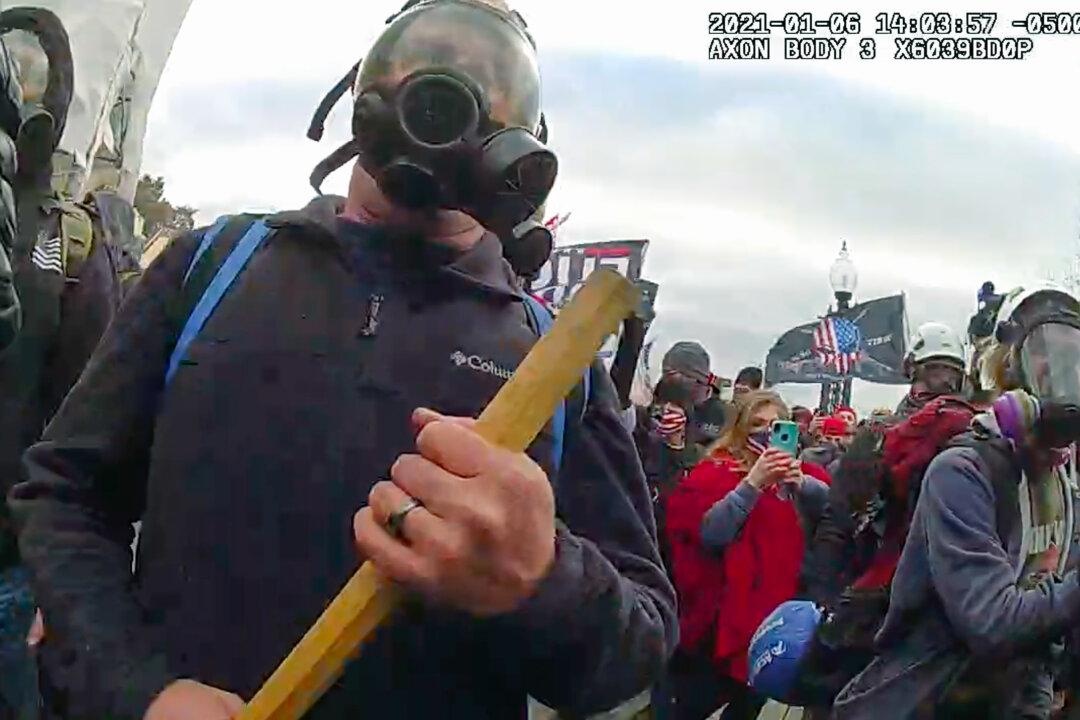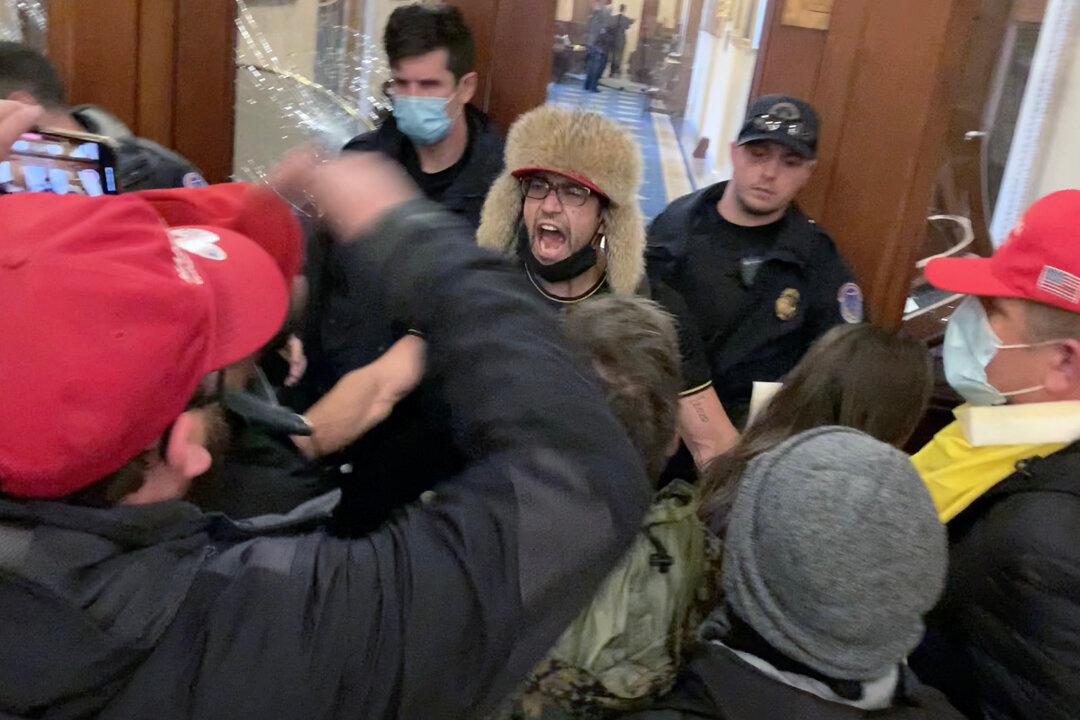A dramatic new Metropolitan Police Department bodycam video shows how officers and medics from three police agencies worked for 15 minutes to try to revive a lifeless Rosanne Boyland after she was dragged feet-first through the Lower West Terrace tunnel on Jan. 6, 2021.
The urgent efforts to restart Boyland’s heart were a stark contrast to the previous 10 minutes outside the tunnel, where protesters begged police for medical help, but their pleas were ignored. Boyland, 34, of Kennesaw, Georgia, was the last of four people who died at the U.S. Capitol that day.
The bodycam video of MPD Officer Sarah Beaver, obtained by The Epoch Times, provides the closest and most detailed view of the life-saving efforts inside the tunnel entrance to the U.S. Capitol just after 4:30 p.m.
A group that included tactical officers from U.S. Park Police, MPD, and U.S. Capitol Police began CPR.
Radio traffic from U.S. Capitol Police, also obtained by The Epoch Times, adds detail to the tragic story of Boyland, one of four supporters of President Donald Trump who died at the Capitol on Jan. 6.
Gas Deployed by Police
A short time later, a cloud of gas deployed by police displaced the oxygen in the tunnel, witnesses said. That set off a stampede of protesters desperate to get outside for air.Officer Beaver stood inside the double doors of the Capitol. Her bodycam captured the gas deployment at 4:20 p.m. Some of the gas blew backward into the Capitol.

The video also shows an officer firing pepper balls into the crowd just before the stampede.
Boyland was one of the first in the crowd to go down. She became trapped as other protesters fell on her or were pushed by police, according to eyewitnesses.
At 4:21 p.m., Beaver’s bodycam captured the voice of a man shouting, “Oh God, a woman’s down!”
About 30 seconds later, the same voice shouted, “A woman’s being trampled!”

Just before 4:24 p.m., another protester shouted, “You’re killing people!”
Two minutes later, Boyland’s friend, Justin Winchell, cried out: “My God! She’s dead! She’s dead! Rose!
“Rosanne! I need somebody!” Winchell shouted. “She’s dead! … I need somebody! I need medics!”
Police officer Lila Morris, who had just come to the tunnel entrance and crouched behind a protester, picked up a wooden walking stick thrown into the tunnel and struck Coffee.

Metropolitan Police determined that Morris’ actions were “objectively reasonable,” and she was not charged or disciplined for striking the unconscious Boyland.
Bystanders pulled Boyland from the police line and moved her down the steps so they could begin CPR. At 4:30 p.m., they carried her back to the police line and set her directly in front of the officers.
At 4:31 p.m., police grabbed Boyland by the feet and dragged her into the tunnel and inside the Capitol.
AED Problems
Over the USCP radio, an officer broadcast, “MPD’s putting out they have a medical emergency on the west front and they need an AED.”An automated external defibrillator (AED) is a medical device that analyzes a person’s heart rhythm and can deliver a defibrillation shock.

Beaver and another officer worked to apply the shock pads of an AED to Boyland’s chest at 4:33 p.m., her bodycam shows. The unit did not appear to be connected to its power source. “I don’t know how to do it,” Beaver said.
Another officer pulled a second set of AED patches from the same kit. The recorded voice from the unit said, “Check electrode tray connection.”
A second AED kit was set down on the floor next to Boyland as CPR continued. Once the patches were applied, the unit gave a warning not to touch her while it evaluated the heart rhythm. “No shock advised,” the voice from the unit said. “Provide chest compressions and rescue breaths.”
Park Police Direct Rescue
Three members of a U.S. Park Police tactical team directed Boyland’s rescue efforts. In the video, one worked a ventilation bottle while other officers did CPR compressions.Just before 4:40 p.m., one of the Park Police officers reported, “I’ve got agonal respiration, no pulse.” Agonal breaths are shallow and intermittent, and a sign that a person is near death. According to WebMD, agonal breathing is also a sign the brain is still alive.
Just before 4:40 p.m., a voice on the video said, “She’s getting cold.”
One minute later, another Park Police officer inserted a breathing tube down Boyland’s throat and connected it to a resuscitation bag. The officer doing the manual respiration had to put his gas mask on because the air in the hallway was full of pepper spray.

According to USCP radio traffic, EMS 72 from D.C. Fire and EMS came through the Capitol’s south barricade at 4:40 p.m. en route to Boyland’s location.
At 4:45 p.m., Boyland was moved from the floor to an improvised two-wheel gurney and wheeled away to rescue unit staff from D.C. Fire and EMS.
The EMS crew took over Boyland’s care at 4:51 p.m., according to a timeline provided to her family by D.C. Fire and EMS. A saline IV was started, and CPR continued for 20 minutes, with epinephrine administered every four minutes. After eight doses, the epinephrine supply ran out.
At 5:10 p.m., EMS 72 requested permission to transport Boyland to George Washington University Hospital. Authorization “was not granted,” according to information provided to the Boyland family. No further explanation was given.
Staff continued taking vital signs until the ambulance left through the north Capitol barricade at 5:40 p.m. Further resuscitation efforts continued at the hospital until 6:09 p.m., when Boyland was pronounced dead.





